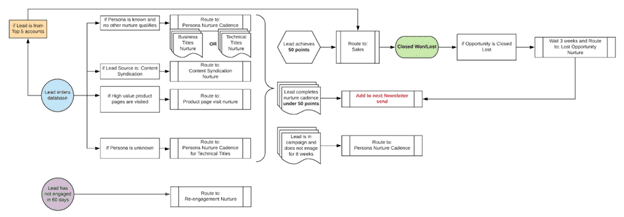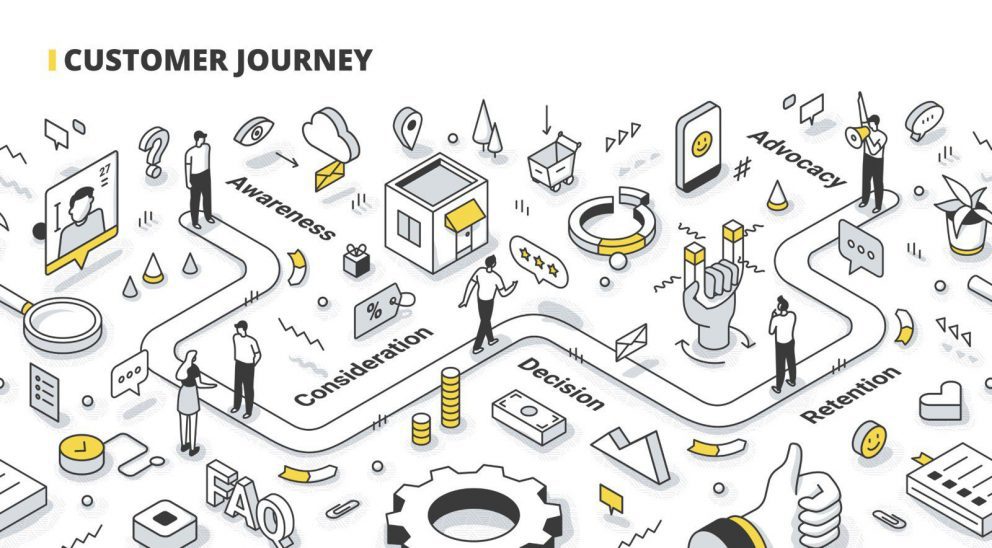6 Steps to a Successful Nurture Program

By Payal Parikh, Director of Client Engagement at Heinz Marketing
Would you marry someone on your first date? I’m guessing that 99% of you would say NO. Then why would you expect your prospect to make a purchasing decision at the first interaction? Most of your leads are not purchase-ready when they first raise their hand. In B2B marketing, it requires multiple touches (at least 7) for a prospect to convert. Does that mean you’d send them ‘Marry me’ or ‘Buy Me’ messages at least 7 times? No. They would run away at lightning speed and ghost you, block you, and unsubscribe.
So how do you approach your prospect who just showed that interest or who fits your typical buyer profile?
You nurture them.
What is lead nurturing and why is it important?
Lead nurturing is a process of engaging your prospects with your brand by providing them content that is appropriate at each stage of their buying process so you can earn their trust and ultimately their business.
Lead nurturing helps in elevating your brand in the eyes of your prospect by providing them relevant information. Prospects are looking to solve their problems and concerns, they have specific pain points. A nurture strategy helps address those concerns by providing content that resonates with them, educates them, sets your brand as a subject matter expert, and builds trust. And once you’ve established that trust as a brand, you have a much higher chance of earning their business.
6 steps to create a successful nurture program
Step 1: Know your audience
Buyer personas are a key element to a successful marketing and sales strategy. If you don’t understand your target audience, how do you plan to sell them your product or service? By understanding your audience, their pain points, you can develop content that speaks to their concerns and needs.
By knowing their job focus and responsibilities, you’ll again be able to draft your messaging and content accordingly.
It is also important to determine their goals. This will help you determine how your product or service will help them achieve their goals more efficiently. Here are Nine Questions to consider when building B2B Buyer Personas.
Step 2: Know your content
Conduct a thorough audit of your existing content and identify gaps.
Before diving into new content development, make sure you know what you need to develop to achieve your goals. Chances are, you’ll find a lot of content you can repurpose. Conduct a content audit of your existing content pieces. And as Lisa mentioned in her blog here, it doesn’t necessarily have to be whitepapers, case studies, ebooks, and guides. It also includes any webinars you’ve done in the past, video clips, blogs, articles, etc. Add all your content pieces to a spreadsheet and start mapping each piece against which persona it is speaking to. Also, map the stage in which it will be relevant to your audience – Top of the Funnel (Awareness stage) – Middle of the Funnel (Consideration stage) – Bottom of the Funnel (Decision stage).
Once you have this information mapped out, you will be able to determine where your content gaps are. This exercise seems daunting to start if you have a lot of content pieces floating around. But it is a crucial step to focus your content development efforts in the right direction.
There are other benefits of this exercise. When developing the nurture programs, you will be easily able to pick your content pieces from the spreadsheet.
Step 3: Map the Buyer’s journey
A well-thought buyer’s journey is important for a successful nurture program. This will help you understand what your Persona is thinking/feeling at each stage of their journey. This will in turn help you deliver messages to address their pain points and speak towards their goals at each stage.
Here are 8 core components of a Buyer’s journey.
Step 4: Choose the right nurture program
Steps 1 to 3 were about building the foundational elements and doing the groundwork before you start developing a nurture program. Once you have this ready, it’s time to start thinking about what kind of nurture tracks you’d like to develop. Here are some of the nurture tracks that I’ve seen success with:
- Generic Persona nurture
By integrating your personas into marketing automation workflows and assigning a persona to each lead, you’ll be set up to automatically nurture every lead. As prospects interact with your business, your website, and your content, they’ll progressively receive relevant information that builds the case for why they should spend money with you.
If your database supports different nurture tracks for each persona, go for it. If not, you can develop separate nurtures for each of your products if you think the audiences are vastly different.
- Industry or Vertical nurture
Again, if your database has enough information on different verticals of your target audience, this is a nurture track you can use to speak differently to each vertical.
- Re-engagement nurture
Even with the most sophisticated marketing strategy, some leads can go radio silent. There will be a lot of prospects in your database who didn’t open your emails, didn’t interact with you on social channels, and didn’t visit your website for a specific amount of time. Depending on your sales cycle and the number of touches from marketing and sales to reach your prospect, you can determine a time limit.
You can set up separate nurture for them to help them re-engage with your brand.
- Top product page visit nurture
This is another nurture you can set up for people visiting particular product pages on your website. Could be one page of X amount of time or X number of pages. The only limitation to this is it will trigger only ‘known’ contacts in your marketing automation database.
- Content syndication nurture
I recommend setting up separate nurture for content syndication leads. It is not best practice to dump content syndication leads into a generic nurture stream – it will do more harm than good (meaning it will lead to more unsubscribes). Even though the generic stream is persona-specific. The prospect wouldn’t have any context or even remember they downloaded the content since it is viewed on 3rd party sites.
- Disqualified leads nurture
What happens to the leads after they are disqualified by your sales team? Do they just sit around in your database? Most B2B marketers I know are looking for more ways to generate leads faster. But here’s a question to think about:
Do you have a process for handling leads from sales back to marketing when they are not sales-ready?
These prospects have raised their hand before and that’s how they landed in your CRM as a lead. Which means they don’t need any awareness about your product. The lead might have disqualified for various reasons, so be careful here. Working very closely with your sales team is key. Make sure you follow-up with the disqualified leads with reasons that work out for the sales team. They know who is a better fit.
When you set up a Disqualified leads nurture, make sure to set it up for marketing as well as sales.
- Campaign Specific Nurture
I recommend setting up specific nurtures if you have some major campaigns running.
- Abandoned cart nurture
This one is for all of you with e-commerce capabilities on your website. For whatever reason—whether they were distracted, their laptop ran out of power, their dog started barking, or someone called them on the phone—customers abandon their online shopping carts all the time. That’s where abandon cart emails come in. They act as a glue between the customer and the cart, used by merchants to recover those almost-lost-forever sales.
Step 5: Create a workflow
Once you have identified which nurture tracks you want to set up, it’s time to map the workflow. Again, collaboration is key here. Work with your Marketing Operations team to understand marketing automation capabilities and limitations. Map out when and who you want to enter each nurture track, what to do after the nurture ends, what to do with catch-all prospects who don’t have much information to qualify for either of the nurtures, what leads marketing nurtures should never touch, etc.
Here is an example of what a typical workflow could look like:
Step 6: Lead scoring
Work with Marketing Operations to determine what your current lead scoring criteria is and determine if it is too loose or too tight. You don’t want to end up sending a bunch of cold leads to sales and you also don’t want to miss out on important ones if the criteria are too tight.
Next Steps:
Once you have all the foundational elements and planning squared away, it’s time to roll up your sleeves and start working on actual copy and designs.
Don’t forget to measure and keep checking if leads are getting scored correctly, just to be sure the back-end setup is error-free.
What are some of the other steps you add to your nurture programs? What other nurture program ideas do you have to share with our readers?






